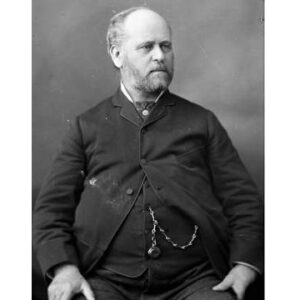Peter Mitchell was a British chemist who was awarded the 1978 Nobel Prize in Chemistry for discovering the chemiosmotic mechanism of ATP synthesis. His work in theoretical biochemistry, which culminated in the development of his chemiosmotic theory, laid the groundwork for the field of bioenergetics. As the son of a civil engineer, he demonstrated an early interest in science. However, as a student, he tended to disregard subjects such as history and geography, despite his aptitude for mathematics and physics. He failed the Cambridge scholarship entrance examination but was eventually admitted to Jesus College through the intervention of his headmaster, Christopher Wiseman. Even in college, he did not perform admirably, despite the fact that he demonstrated great potential in biochemistry and thrived under the tutelage of Frederick Gowland Hopkins. He eventually began his academic career at the University of Edinburgh, where he founded the Chemical Biology Unit, a biochemical research unit. In the 1960s, he and his colleagues embarked on a program of research on chemiosmotic reactions, which eventually earned him the Nobel Prize.
Childhood & Adolescence
Peter Dennis Mitchell was born in Mitcham, Surrey, England on September 29, 1920, to civil servant Christopher Gibbs Mitchell and Kate Beatrice Dorothy (née) Taplin.
He attended local grammar schools for his primary education and then Queen’s College for his secondary education. From an early age, he was fascinated by science and mathematics and excelled in these subjects. However, he neglected subjects such as history and geography, resulting in his inability to earn excellent grades.
He attempted but was unable to pass the Cambridge scholarship entrance examination. Christopher Wiseman, his headmaster, intervened and assisted Mitchell in gaining admission to Jesus College, Cambridge, for the fall of 1939.
For his Tripos I (first two years), he studied physics, chemistry, physiology, and biochemistry; for his Tripos II (second two years), he studied biochemistry (third year). He received second-class marks on his examinations but flourished in Frederick Gowland Hopkins’ Biochemistry Department.
He was appointed to a research position in the Department of Biochemistry at Cambridge in 1942 and worked under the supervision of James Danielli on war-related research.
Career of Peter
In 1950, while pursuing his doctorate, Peter Mitchell was appointed Demonstrator at the Department of Biochemistry by the department’s new head, Frank Young. Mitchell received a Ph.D. in early 1951 for his research on penicillin’s mode of action.
He worked as a demonstrator in the Sub-Department of Microbiology. In 1955, he was invited by Professor Michael Swann to establish and direct a biochemical research unit at Edinburgh University called the Chemical Biology Unit. Mitchell agreed to the proposal.
He was appointed Senior Lecturer at Edinburgh University in 1961 and promoted to Reader the following year.
Around this time, he developed acute gastric ulcers, which significantly harmed his ability to conduct research. In 1963, he took a leave of absence and resigned.
Between 1963 and 1965, he did not conduct any research but oversaw the restoration of a Regency-fronted mansion in Cornwall known as Glynn House.
He redesigned a large portion of it as a research laboratory and, in collaboration with a former colleague, Jennifer Moyle, established Glynn Research Ltd. as a charitable organization. Mitchell was appointed director of research for the organization in 1964.
He began his seminal research on chemiosmotic reactions and reaction systems in the 1960s. Years of intensive research in collaboration with colleagues resulted in the discovery of the ATP synthesis mechanism.
At the time, the biochemical mechanism of oxidative phosphorylation synthesis was unknown, and Mitchell proposed the chemiosmotic hypothesis, which became the foundation for understanding the actual process of oxidative phosphorylation.
His interest in the communication between molecules sparked an interest in the communication problems that face individuals in civilized societies. He deduced from his own experiences that smaller organizations are, on average, more effective than larger organizations for a variety of purposes. Mitchell left Glynn in 1985 as director of research.
Significant Works of Peter
Peter Mitchell made seminal contributions to biochemistry by discovering the chemiosmotic mechanism of ATP synthesis. His chemiosmotic hypothesis laid the groundwork for understanding the oxidative phosphorylation process in its entirety.
Awards and Accomplishments
In 1978, he received the Nobel Prize in Chemistry “for his contribution to our understanding of biological energy transfer through the formulation of the chemiosmotic theory.”
Mitchell received the Copley medal in 1981 “in recognition of his eminent contribution to biology through his formulation and development of the chemiosmotic theory of energy transduction.”
Personal History and Legacies
Peter Mitchell married Eileen Rollo for the first time in 1944. They had a daughter. However, the marriage began to disintegrate within a few years and ended in divorce in 1954.
Helen Robertson was his second wife, whom he married in 1958.During his later years, he suffered from deafness and complications from a botched surgery, and died on 10 April 1992, at the age of 71.
Estimated Net Worth
Peter is one of the wealthiest newscasters and is ranked among the most popular newscasters. Peter Mitchell’s net worth is estimated to be between $1-5 million, based on our analysis of Wikipedia, Forbes, and Business Insider.


